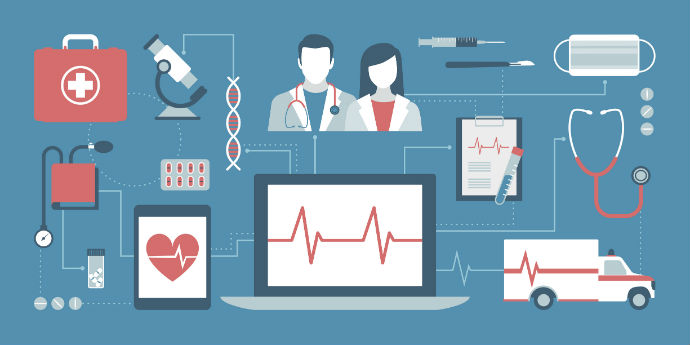Healthcare PCs Reduce Secure Login Times, Improve Patient Care
Healthcare PCs offer organizations tools that reduce secure login times so clinicians can spend more time interacting with patients.

Source: Thinkstock
- Healthcare organizations continue to digitize their health IT infrastructure, which calls for more advanced tools for clinicians that reduce secure login times.
HP Senior Director of Worldwide Healthcare Reid Oakes told HITInfastructure.com why all-in-one workstations are a viable option for HIT infrastructure, following the release of HP’s EliteOne 800 G3 Healthcare Edition All-in-One.
Healthcare organizations face workstation requirements that other industries do not, including increased security requirements and infection control.
“As patient needs evolve, healthcare providers are under increased pressure to provide quality care while quickly adapting to changing dynamics in their industry,” said Oakes. “Increased security threats, the need to better manage infection control across all touch points –including technology –and finding new ways to collaborate between healthcare professionals and patients were some of the many factors that went into designing our first All-In-One for the healthcare industry.”
Entities need to ensure that the devices their clinicians are using at the point of care can successfully defend against cyberattacks.
READ MORE: Virtual Workspaces Enhance SCL Health’s HIT Infrastructure
“When we look at the overall high-value target aspect of healthcare, we see compromise,” Oakes explained. “We see attackers or malware or phishing attempts. We see those ramping really heavily within healthcare.”
Healthcare data breaches were up 23 percent in the past year, according to HP, with the average stolen patient medical record costing organizations up to $355 per record. Healthcare organizations need workstations that can stand up against all major types of malware and cyberattacks.
Healthcare workstations that function as individual and full functioning PCs need to have major security agents built in natively so when the user starts it up, all healthcare security features are turned on.
Oakes noted that the EliteOne 800 G3 includes enterprise-wide management to ensure that all devices are operating on the same security standards.
“What enterprise-wide management helps organizations do is help make sure at a policy level they can say that the entirety of the network is configured the same,” Oakes explained. “From a reporting perspective, when the Office of Civil Rights comes looking to audit, it's easy to be able to point to audit reports and say for sure that every workstation’s security level is where it needs to be.”
READ MORE: Cloud-Based Virtual Desktop Infrastructure Growing in Health IT
Oakes pointed out the importance in working with customers and users to fight off the common security threats that plague the healthcare industry. Encryption is one of the main lines of defense against cyberattacks on endpoint devices.
“Encrypted drives allow for any data resonant on the machine to be able to be encrypted up to specific levels,” said Oakes. “This allows enterprise reporting to be able to say that they know the drives were encrypted. Now it’s known what user saw what, when they saw it, and which end-users were involved in a breach.”
Oakes also stressed the importance of BIOS protection in the event a physical device is compromised.
“Secure BIOS protection is in place in case someone walks up and gains physical access to a machine in the reception area or in a public area,” he observed. “An unauthorized user can put USB drive into the machine to basically have it take on a virus or introduce a virus to the environment. The secure BIOS site can automatically lock the ports to make sure that they're inactive unless the user is authenticated.”
Oakes believes that advanced workstations have a large part to play in the future workflow and dynamic of health IT infrastructure.
READ MORE: Healthcare Virtual Desktop Deployments On the Rise
“Having and all-in-one workstation allows the healthcare environment to continue to explore digitization, continue to explore technology, and continue to grow in that space,” Oakes stated. “Instead of being limited and fearful of attack, we can basically have the right pieces in place to secure it. That's a big piece of the puzzle.”
Advanced authentication methods help protect the network, as well as reduce the amount of time clinicians spend logging into and out of applications and devices. HP implemented its WorkWise technology that logs clinicians in as they walk up to their EliteOne 800 G3.
“It helps from a workflow perspective,” Oakes explained. “The average healthcare users spend about seven minutes per encounter, which is the industry standard. About two minutes of that time is spent interacting with IT technologies.”
“When you think about the fact that a physician typically logs in and logs out an average of about 72 times a day, that's an hour-plus a day,” he continued. “If organizations can tune that process, they can ultimately increase the quality of interaction with the patient. They can also potentially see more patients in a day.”
More healthcare applications and programs are being used, which calls for tools that converge the login process. Workstations are becoming more popular in healthcare because they are secure and cut down on login times which allows clinicians to spend more time interacting with patients. When entities can reduce secure login times and keep data secure, they will be making key progress for better HIT infrastructure security.
